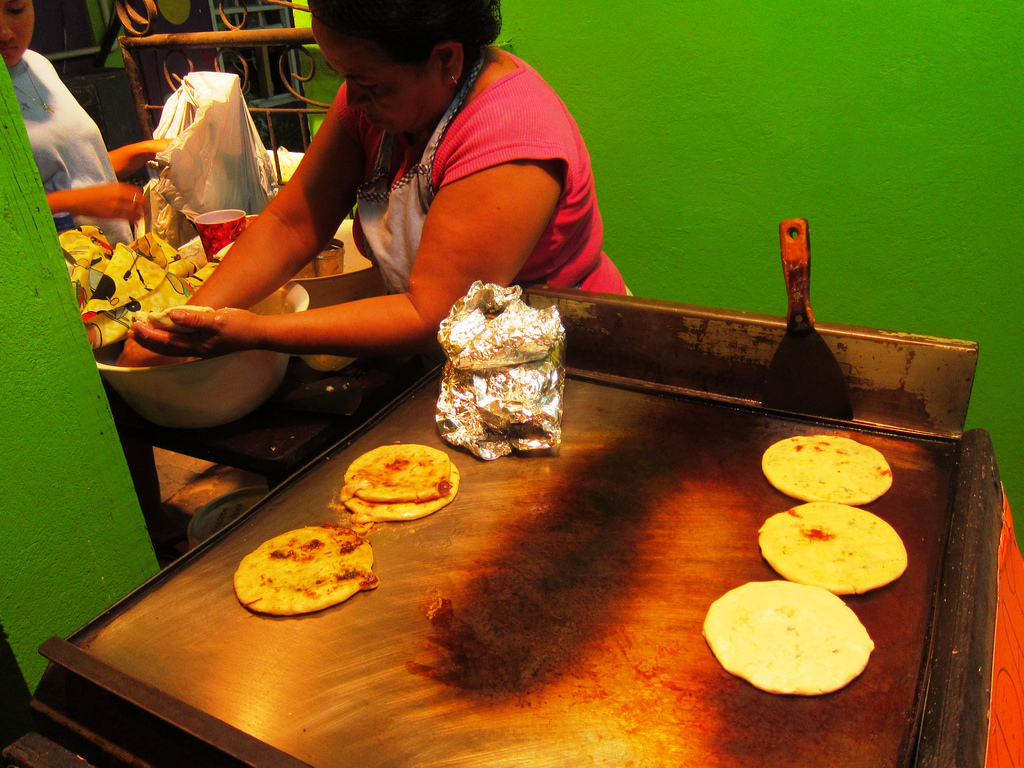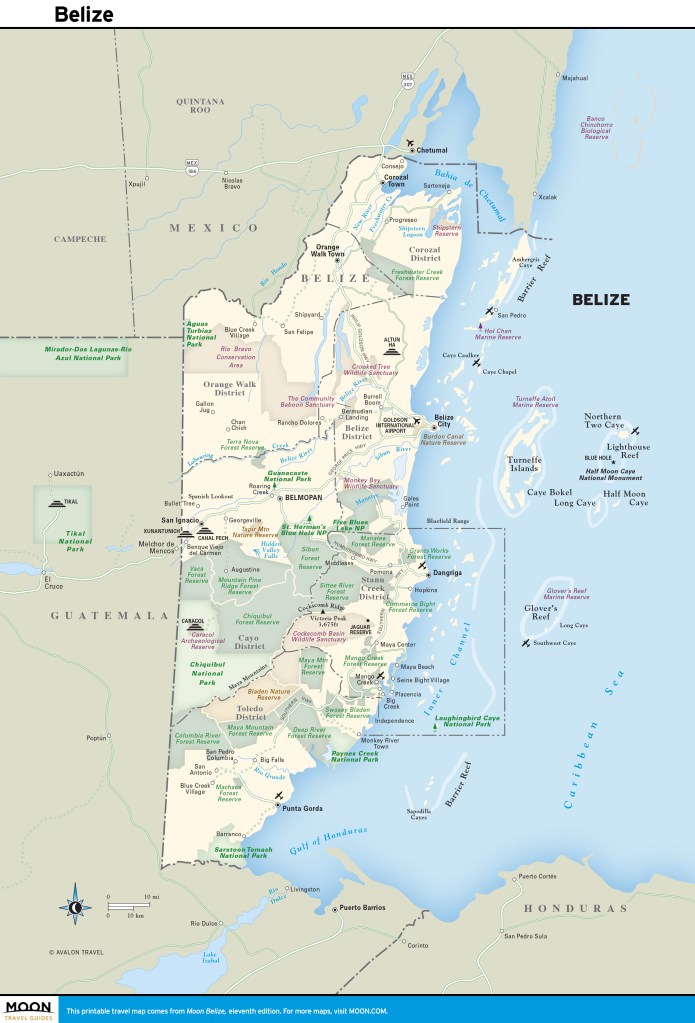From Food to Sports to Religion: Culture in Belize
Belize is a melting pot of cultures, religions, languages, and ethnicities. Those who make up the majority of the population include Creoles of mixed African and European heritage, Mestizos of mixed Indian and European heritage, Maya, Garifuna of African and Caribbean Indian heritage, East Indians, Chinese, Mennonites, Lebanese, North and Latin Americans, and Europeans. The result is a friendly, accommodating people who live mostly in harmony. Belize’s unique blend of people and cultures is related to its history; many people ended up here by accident or through persecution elsewhere.

It is one of the many charms of Belize that such a diverse group can live together in relative peace while still practicing their own religions, engaging with their own traditional cultures, and speaking different languages.
Food
Belize’s food culture draws on the country’s diverse heritage. Mainstream cuisine utilizes American, British, Mexican, and Caribbean flavors. Staples in various forms include rice and beans; Mexican food like tamales, tacos, burritos, enchiladas, empanadas, garnaches, or frittatas; and Belize’s famous chili sauces, placed on every table.
Gibnut (a type of deer), iguana (also known as bamboo chicken), armadillo, and turtle are considered delicacies but are illegal to hunt. Slices of fruit in small bags are sold on every street corner. Smoke rises with tantalizing aromas from BBQ pork and chicken on the streets, usually served in a Styrofoam box with some coleslaw and a tortilla. Conch, lobster, crab, shrimp, and fish are also popular, along with a variety of soups; ceviche appears on most menus. A lot of food is fried in fat or oil. Delicious little meat or vegetable pies are served everywhere, along with small lobster or conch fritters. More Western foods such as burgers and slices of pizza are also available.
There are several good Belizean beers, including Belikin ale and stout, and Lighthouse. Cheap local rum is popular, as are sodas and various fruit drinks. To satisfy the Belizeans’ sweet tooth, an assortment of cakes are sold and bread can be rather sweet.
Prevalent ingredients and vegetables used in cooking are coconuts, lime, honey, chilies, garlic, tomatoes, onions, black beans, plantain, yams, sweet potatoes, kidney beans, cabbage, carrots, chocho (a type of squash), calaloo (a type of spinach), sour sop, cabbage, cassava, string beans, and avocadoes. Bananas, papaya, mangoes, watermelon, citrus fruits, star fruit, and pitaya (a delicious succulent purple fruit with small black seeds) are common fruit you will see in most markets.
Belizeans love drama, song, and dance, and they celebrate their public holidays—many derived from their history—with great spirit and enthusiasm. They also love to party and celebrations can last until dawn. Celebrations are worth attending and are great fun.
Visual Art and Crafts
There are many wood carvers in Belize, who mainly produce animals and bowls. Ceramics, engravings on slate, and basket and cloth weaving are also common. Bright threads are stitched in a variety of patterns and designs onto a black background and used as tablecloths or turned into bags and pouches. These are mainly sold to tourists.
There is a flourishing art scene in Belize. The artists often draw inspiration from their surroundings, depicting locals or local scenes in bright colorful strokes. Some well-known artists include Lola Delgado, Pen Cayetano, Carolyn Carr, Eluterio Carillo, Benjamin Nicholas, Terryl Godoy, The Garcia Sisters, George Gabb, Eduardo Alamilla, Walter Castillo, Nelson Young, Orlando Garrida, and Mike Gvarra.
Newsletter Signup
By clicking ‘Sign Up,’ I acknowledge that I have read and agree to Hachette Book Group’s Privacy Policy and Terms of Use
Music
Belizeans love music and they like to play it loudly. There is a long history of music in Belize with contributing influences from multiple ethnic groups. You will hear a wide variety of music from reggae, Spanish ballads, hip hop, Western pop, marimba, calypso, soca, punta, brukdown, and steel drumming. Brukdown was originally developed by Creoles working in logging camps during the 18th and 19th centuries. Its main instruments include an accordion, banjo, harmonica, and a percussion instrument (whatever comes to hand, for example, using a stick to rattle the teeth in the jawbone of an animal). Wilfred Peters Boom and Chime Band are best known for brukdown music.
Punta rock originated in Dangriga in the 1970s; it draws on Garifuna music, combining Creole rhythms and heavy African percussion, and is sung in Creole or Garifuna. Andy Palacio and the Punta Rebels are probably the most well known punta rock group. A satire on the tourist business, Bikini Panti was a big hit of Palacio’s in 1988. Punta rock has since been expanded on and mixed with other styles such as R&B, jazz, and pop to create punta pop. If you like reggae or calypso music, you’ll probably like punta rock, but be prepared for vigorous hip shaking and gyrating!
Mestizo music draws on both traditional Maya music that uses log drums, rattles, and shells, and Spanish classical music. Marimba music is also popular in Mestizo communities in Belize.
Sports and Recreation
While Belizean sports aren’t highly recognized at the international level, Belizeans are passionate about sports and have struggled with a lack of finance and facilities. Soccer has the biggest following in Belize, followed by basketball. It’s worth going to a Belizean soccer match just to experience the atmosphere, the highs and lows, the euphoria, the praise shouted at players when the home team does well, and the abuse (which could make you blush!) heaped on them when they make a mistake. It’s not personal; the fans just get caught up in the heat of the moment.
Cycling is popular and, if you are up early driving, you will often see teams of cyclists racing along in training for the many national races held on national holidays. Canoeing is a part of life and also an annual challenge in the form of La Ruta Maya Belize River Challenge, a four-day canoe race across 80 miles of river on Baron Bliss Day in March. Along the coast, water sports are popular and cater to Belizeans as well as to the tourist market for economic necessity.
There are three golf courses in Belize; as the number reflects, it’s not a major sport here. You will see quite a few horses around. Traditionally there was not really a horse event circuit in Belize, although there is horse racing in Burrell Boom on national holidays. A few expat establishments, primarily in Cayo, are changing the horse-racing scene; for instance, there’s a major race in Cayo called the Triple Crown Endurance Race, run by Light Rein Farm and Belize Equestrian Academy.

Religion
There are 16 different religions in Belize. Roman Catholicism is the largest by far, though its following is decreasing slightly. Other popular denominations are Seventh Day Adventists, Baptists, Anglicans, and Pentecostals. Interestingly, the largest group after the Catholics in the 2010 census is the people who said they didn’t belong to any religion. That number had doubled since the last census.
Religion is a force to be reckoned with in Belize and has a large following. Christian churches of various denominations work in partnership with the government to run the state schools. Church groups often do a lot of good community work. Unfortunately there are some church groups that prey on the poor and vulnerable by providing a community service and then requiring a mandatory contribution to the church. It is reputed to be a common fraud. The Garifuna have their own religion, as do some of the Maya. The Mennonites—although Christian—follow their own church. There are pockets of other religions in Belize, such as Hinduism, Islam, and the Baha’i faith.
Excerpted from the Second Edition of Moon Living Abroad in Belize.
Newsletter Signup
By clicking ‘Sign Up,’ I acknowledge that I have read and agree to Hachette Book Group’s Privacy Policy and Terms of Use





